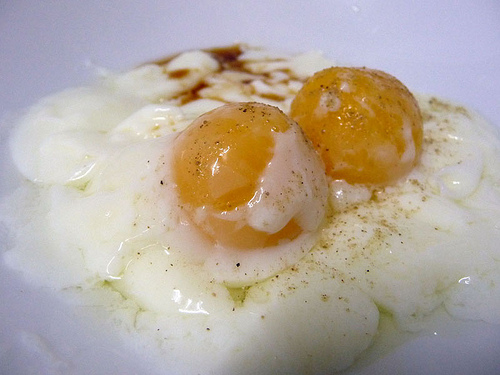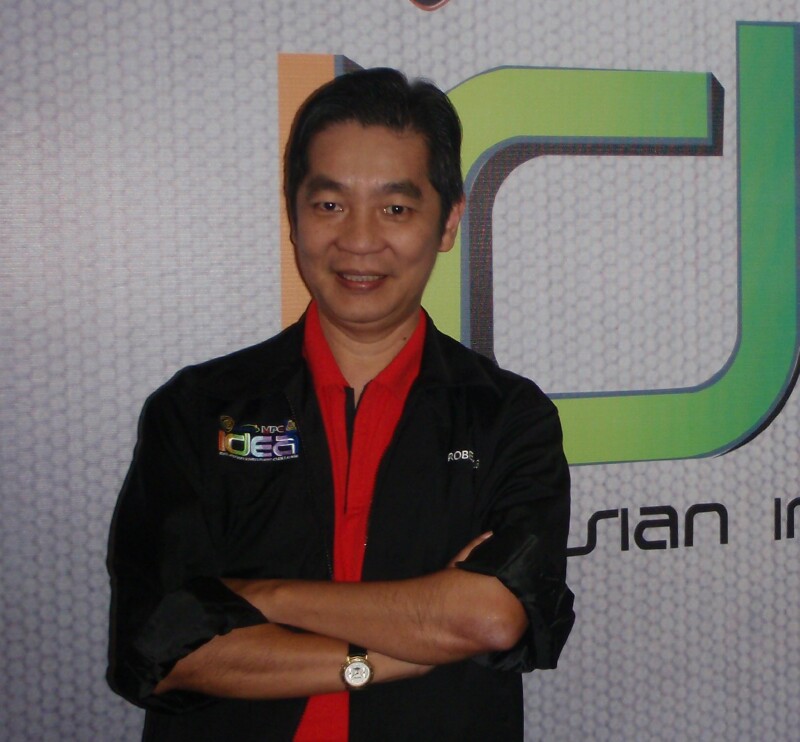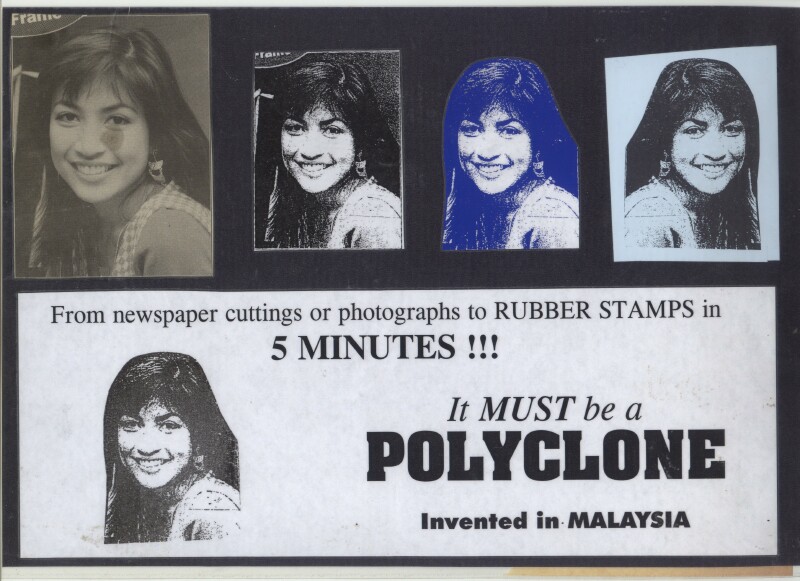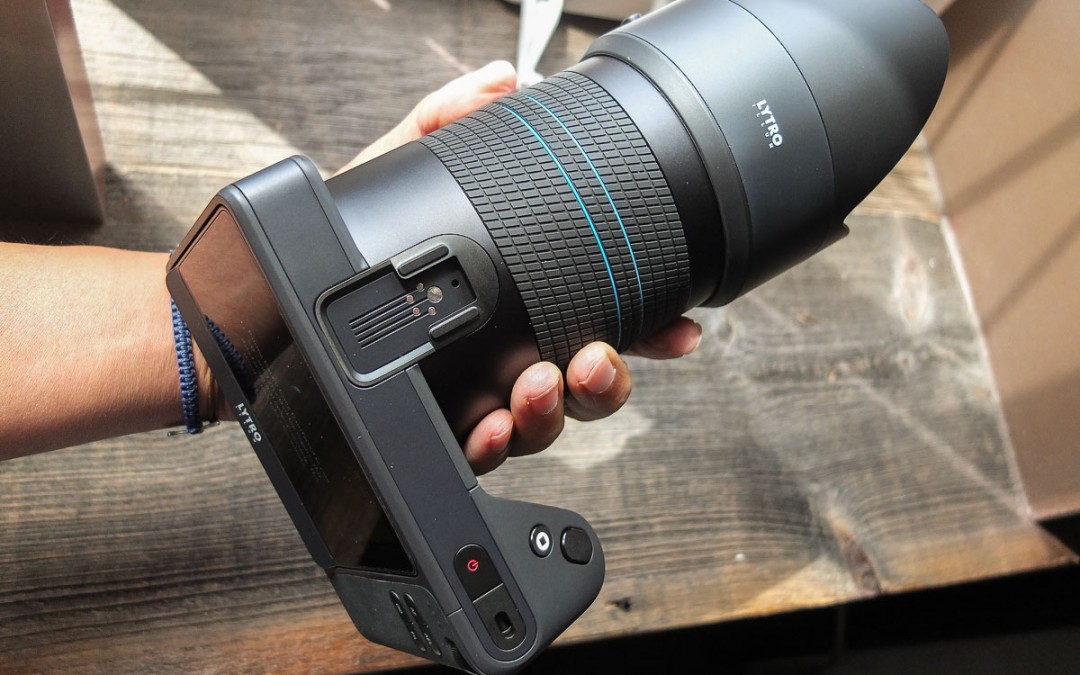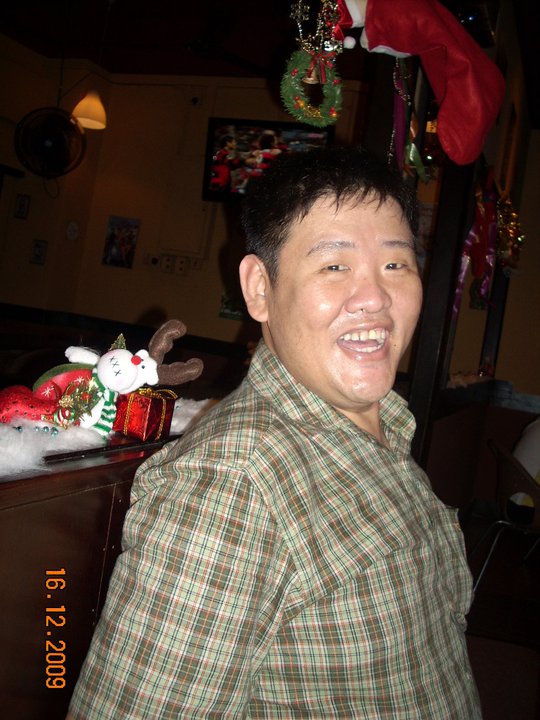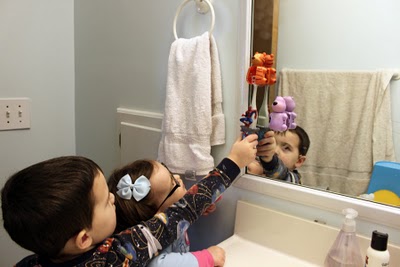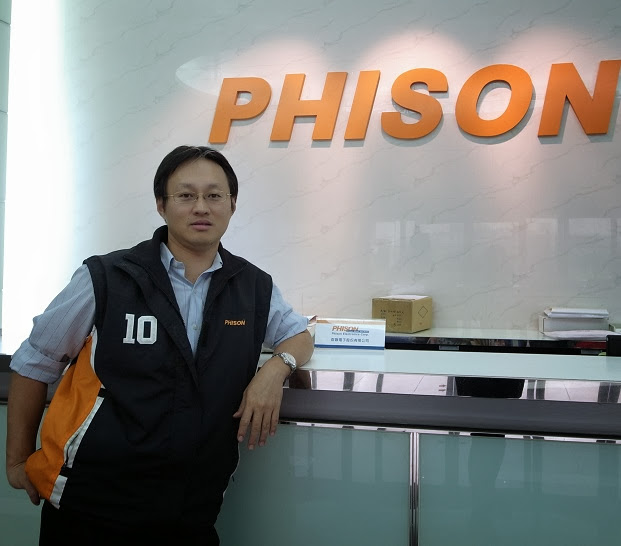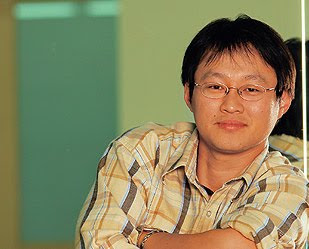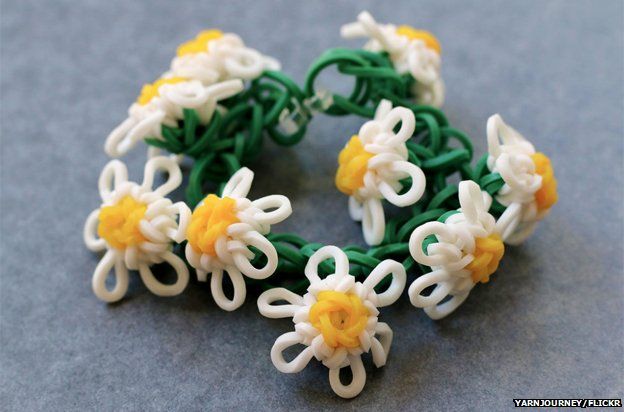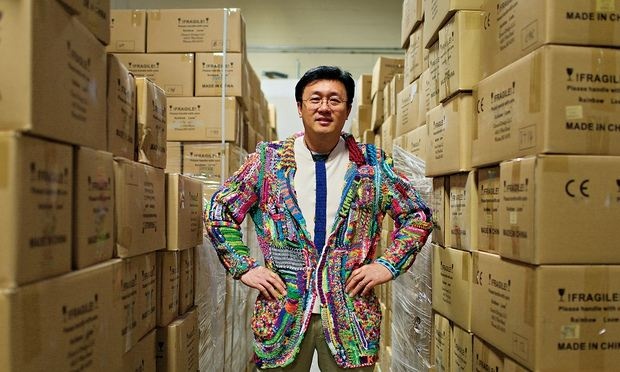8 Everyday Things You Didn't Know Were Invented By Malaysians
Because we're geniuses!
1. The automatic egg boiler. Located in almost every kopitiam and mamak, this nifty device made all half-boiled eggs perfect to its core.
Who invented it: Datuk Hew Ah Kow.
What it is: It is a detachable 4-piece plasticware. Basically, you place raw eggs into the container, pour in boiling water, then wait for the water to slowly drip to the bottom. Your eggs are done when the water has drained fully!
Datuk Hew Ah Kow invented the device that would revolutionise all soft-boiled eggs forever.
Image via The StarHow did it happen? Back in the days when Datuk Hew Ah Kow was just a lad working as a bulldozer operator in the jungles of Kelantan in 1973, there was little time to keep count of the minutes.
“There were about 20 of us in a lumber camp who liked nothing better than to start the day with half-boiled eggs. The problem was, we always lost track of time, carried away with things like checking the engines and refuelling. So, by the time we got back to our eggs, they were always overcooked,” recalls Hew.
“Young and full of bravado, I took it as a challenge and began to conduct my own experiments, puncturing the bottoms of Ovaltine cans with a nail and filling them with eggs and hot water,” says Hew.
It took a year before Hew found the correct ratio of water to eggs. As he drew closer to a solution, Hew’s tests made him go off eggs. It also affected his colleagues who had to help eat his experiments.
The effort eventually paid off when one day, a direct-selling stockist rode his Honda Cub into Hew’s work camp and got marooned by the rain, forcing an overnight stay. At breakfast, he got to sample the most perfect half-boiled eggs he had ever tasted.
“It was the camp cook who pointed me out. At first, he came to me and asked if I could give him one of my Ovaltine cans to take home. I said ‘No way.’ Then he asked if I could sell him the prototype so I said, ‘Fine, let me see the money first.’ He returned and gave me RM7,000,” recalls Hew.
2. Rubber stamp clone. Before this invention, you would have to wait for days for a custom rubber stamp to be made. The Polyclone can do it in 5 minutes.
Who invented it: Robest Yong.
What it is: The Polyclone rubber stamp machine has changed the rubber stamp industry of the world. With this invention, it takes only five minutes to make rubber stamps when previously one had to order days or weeks in advanced. The invention eliminates completely the need for lettering bits, composing messy plaster moulds, the use of high temperatures, and the need for photographic equipment.
How did it happen? His first claim to fame was the instant rubber stamp machine, which has since revolutionized the way rubber stamps are made. The idea first came to him when he wanted to start his own company. “Everybody needs to get a rubber stamp,” he says. “But I noticed it took so long to make them - up to a week. I felt this process could be improved.”
So, he set about to do something about it. While in Japan he had noticed a printing technology using a photo-polymer that he believed could be used for his instant rubber stamp device.
In creating the prototype he realised that photopolymers were not suitable for making rubber stamps, so he went to Japan to find out if it was possible to adjust the formula to fit his needs. He found his answer there. The material he used for the stamp is not natural rubber but Polyclone, a polymer that looks like transparent rubber.
The next year, he won a gold medal for that product in the International lnvention Competition in Geneva and he returned a local hero, with lauded by strong newspaper coverage.
‘People used to laugh at my product because they couldn’t believe I was the first to create something like this,” he says. “They thought surely someone overseas would have already come up with it.”
Bonus: Robest reached out to us and shared that he has a new product, the VisionTouch Braille Phone, a screen protector with an app to help the visually impaired navigate the touch screen phone. Read how he came up with the idea here!
3. Nehemiah walls. Did you know those hexagon-shaped blocks along flyovers are invented by a Malaysian? The design is such a success that it is being used in countries such as Singapore, Australia, and Hong Kong.
The Nehemiah walls are more durable and faster to build compared to rigid concrete blocks.
Image via metrioWho invented it: Dr. Nehemiah Lee.
What it is: A Nehemiah Wall consists of three major components: a facade, reinforcing bars, and soil.
Its facade, or facing panel, comprises hexagonal (honeycomb-shaped) blocks of pre-cast concrete, each interlocked with dowel bars. But the real ingenuity lies behind these panels: the compressed soil, usually sand, that holds up the facade is strengthened with galvanised carbon steel rods running through it and into the panel. Each hexagon in the facade has at least four of these steel bars, with each bar secured by an anchor block.
How did it happen? "In the early 1980s I was working with Reinforced Earth, a concept developed in the 1960s by French engineer and architect Henri Vidal. He turned the concept into an engineered system and popularised the idea of using reinforced soil in construction."
“I studied the system, learnt the technology, and researched heavily into creating my own modified system while working on my Masters degree,” says Dr Lee, adding that, “I’ve always been fascinated with the idea of building walls that are not for dividing people, but are strong, versatile, and useful.”
Liew Shaw Shong, consultant engineer and director of G&P Geotechnics Sdn Bhd, likes the design: “We’ve used Nehemiah Walls for about 30 projects that were awarded through open tenders. The advantage of the walls is their design that can tolerate differential settlement of soil along a single stretch of wall. A typical reinforced-concrete wall is unable to accommodate this and will crack."
Apart from its technologically sound product, Liew offers another possible reason why the company has been so successful: “There are variations of reinforced earth walls but Dr Lee gave us the most competitive pricing and proposal. His team is very pleasant to work with, as its members are prudent, responsive, and have integrity. They don’t just simply do things. They even assessed the project beyond their job scope to offer technical advice to us.”
thestar.com.my4. The Lytro Camera. The Lytro camera solves the age-old problem of unfocused photos. Since its inception, many competitors have been mimicking the technology onto their own products.
Who invented it: Ren Ng.
What it is: Lytro is a plenoptic camera, which lets users adjust the focus of a photograph after the fact thanks to an array of micro-lenses over the camera’s sensor.
How did it happen? Ng was doing theoretical research at Stanford University in light fields at the time he tried to photograph his friend’s daughter. After sitting in on a research meeting discussing the design of a light field camera (which was formerly composed of an array of about a hundred digital cameras attached to a supercomputer when the technology was first introduced in the 90s), he thought to himself, “That sounds really cool, but that’s not going to be very practical.”
So Ng was prompted to switch his emphasis to cameras, specifically how he could shrink light field technology down into a commercial-size package. He spent time studying optics and working with electrical and mechanical engineering professors to put the camera together, since as a computer science student, he didn’t have that training.
After getting his Ph.D. (and receiving honors like the ACM Doctoral Dissertation Award in the process), Ng set out to put his research to use by starting a company that would produce light field cameras that everyone could enjoy.
Lytro's camera technology enables a user to change the focus of a picture after it has been taken.
Image via digitaltrendsThe Lytro sensor’s sensitivity to light also makes it possible to take photos in very low-light conditions without the need of a flash. It also makes it possible to take 3D-like photographs with only a single lens, and without the need for glasses to see the immersive effects.
“Lytro’s breakthrough technology will make conventional digital cameras obsolete,” says Lytro investor and well-known venture capitalist Marc Andreessen of Andreessen Horowitz. “It has to be seen to be believed.”
5. Greener and cheaper water dispensers. These water dispensers have been a life saviour to many college students around Malaysia. If you're one of them, you can thank Mr. Ooi for creating this wonderful machine.
Who invented it: Mr Ooi Seng Chye.
What it is: A water dispensing machine which processes raw sewage water into clean drinking water, via reverse osmosis method, reducing the waste to nearly nett zero.
How did it happen? Hailing from Penang, Mr. Ooi spent much of his time working as a Purchasing Manager at Wong Engineering Bhd, a company listed on the KL stock exchange. He then moved to Kuala Lumpur to try out new things. His water dispensing system obtained Cradle funding worth RM150,000 and today, he is the proud owner of about 500 RO water dispensing unit placed in various locations around Kuala Lumpur and Petaling Jaya under the brand Good Drink. Mr. Ooi continues to improve his line of dispensers to meet the demand of the market and has started creating a new RO water dispensing system to cater for residences living in high rise buildings.
The RO process of turning raw sewage water into clean, drinkable water.
Image via Macri Malaysia via Facebook6. The Flipper toothbrush holder. Designed to keep your toothbrushes clean, the toothbrush holder was a commercial success and won numerous design awards both locally and abroad.
Who invented it: Goo Yock Tee.
What it is: Flipper is a nifty toothbrush holder with a unique patented design. Through a cleverly-designed mechanism, a Flipper stores your toothbrush in an enclosed compartment and yet opens/closes automatically and conveniently.
How did it happen? Flipper is the result of our labor of love and dedication. It began with a problem that we observed: how can toothbrushes be kept hygienically and simply? The toothbrush has to be fully enclosed, and the holder must open and close effortlessly without touching any toothbrush bristles.
Our designers and engineers then spent many months to find solutions to tackle this problem, before developing the unique and original Flipper mechanism from scratch. The design was eventually perfected, and it immediately redefined the product category as a clever and practical innovation. In recognition of its originality in invention, Flipper has been granted patents worldwide.
7. Flash Drive. All your assignments, all your movies, and songs stored into one little device. Who ever knew it was all because of the work of one Malaysian?
Who invented it: Pua Khein Seng. However there has been some claims from other parties that they have invented the USB flash drive first.
What it is: A USB Flash drive is a data storage device that includes flash memory with an integrated Universal Serial Bus (USB) interface.
Phua Khein Seng, the founder of Phison and the inventor of the world's first single chip USB flash drive.
Image via putriarianaHow did it happen? The former Pin Hwa High School student left Malaysia at the age of 19 to pursue his degree in electrical and control engineering at Chiao Tung University in Taiwan. During his third year at Chiao Tung, he began conducting research into flash memory technology. Pua founded Phison Electronics with four partners and produced the world's first USB flash drive with system-on-chip technology in 2001.
8. Loom bands. The humble rubber band is all the rage in schools today. The ability to create your own jewellery with rubber bands has been a hit, selling 3 million units worldwide!
Who invented it: Cheong Choon Ng.
What it is: The Rainbow Loom is a plastic device for turning small rubber bands into jewellery.
How did it happen: I forged a career in crash safety in Detroit's motor industry. I loved my job, but regretted not seeing my two daughters much.
They were nine and 12, and distant towards me. One night after work, I saw them making bracelets from rubber bands and I thought, "Hey, I know how to do this. Maybe I can impress you girls." I sat down and showed them how to link the rubber bands together, using the same technique we had used to make jumping ropes back in Malaysia. But the bracelets kept falling apart. I went down to my basement, grabbed a scrapboard and stuck multiple rows of pushpins into it. Then I started linking the bands in a zigzag, like a diamond shape, and it worked really well.
The next day, my daughters took a bunch of colourful bracelets to school. I became a neighbourhood hero overnight. Children would come up to me and ask me to make them bracelets. It was my older daughter, Teresa, who first suggested selling them. I spent six months developing the product and designed 28 different versions.
But no-one knew how to use the loom.
So Ng and his daughters made instructional videos and put them on YouTube. Their YouTube channel now has more than 13 million views, not including videos by customers sharing their own designs.
Ng said their first big success came in the summer of 2012, when a Learning Express Toys franchise owner who’d ordered 48 kits placed a US$10,000 (RM32,000) order soon after.
Since then, Rainbow Loom has caught the imagination of children and teenagers, with over three million kits sold.
By April, Rainbow Loom’s assembly and distribution had moved from Ng’s living room to a warehouse, and they now have 14 employees. Rainbow Looms are sold in more than 2,000 retail outlets.


